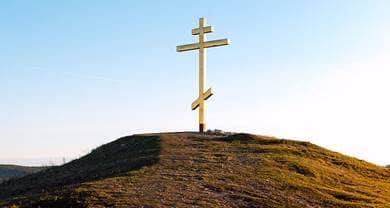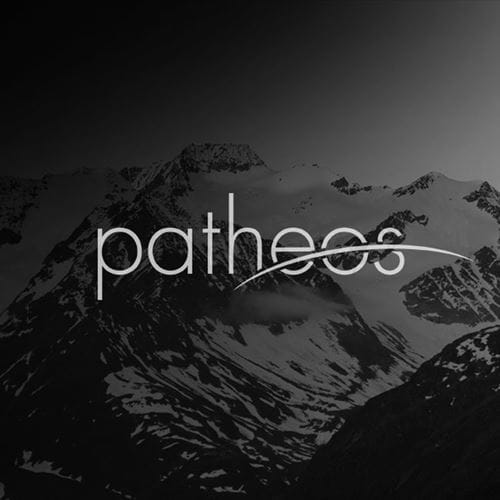- Trending:
- Pope Leo Xiv
- |
- Israel
- |
- Trump
- |
- Social Justice
- |
- Peace
- |
- Love

RELIGION LIBRARY
Eastern Orthodoxy
Historical Perspectives
The history of Christianity is often traced along a trajectory that begins with Jesus, and then flows through Rome to the Protestant Reformation and beyond. Somewhere beyond the boundaries of the West lies Orthodoxy. This situation exists despite a wealth of scholarly resources that enable researchers to describe a rich and complex history. As scholar and bishop Timothy (Kallistos) Ware has noted, Eastern Orthodoxy is not a kind of "Roman Catholicism without the pope." It is a tradition that is deeply resonant and familiar to western Christians, yet quite unlike anything in western Christianity. It is ripe for fresh research, and there are many stories waiting to be told.
One subject that has held particular interest for scholars is the dispute between Constantinople and Rome. Several scholars working on the history of this dispute have discovered a story filled with nuance and peopled by powerful personalities, in the process overturning oft-repeated and conventionally accepted assumptions about the events of the Great Schism. One early example is The Photian Schism: History and Legend (Cambridge 1948), Francis Dvornik's study of a 9th-century argument between Rome and Constantinople. Through careful research, Dr. Dvornik refuted the assumption that a schism had existed between the two sees during the second reign of Photius, Patriarch of Constantinople, proving instead that east and west were in full communion during this time.
Other equally careful and detailed studies shed new light on earlier assumptions concerning the 11th century, and most significantly, the events of 1054. While it is still possible to find histories that name 1054 as the date of the Great Schism, a careful reconstruction of events has shown that Rome and Constantinople remained in full communion at this time. The main actors in the events of that date, Patriarch Michael Cerularius and papal legate Cardinal Humbert, were difficult and stubborn men, unwilling to make the kinds of gestures necessary to make diplomacy possible. They fed each other's hostility until they wound up excommunicating each other. However, these declarations of excommunication were ultimately only applicable to Cerularius and Humbert, not to the eastern and western churches as a whole. Historians of Christianity have benefitted considerably from these and other studies, learning to see the schism between Constantinople and Rome as a centuries-long and complex process, subject far more to history and geography than to doctrinal disagreements.
Despite these fresh takes on old wounds, a chasm still exists between the eastern and western perspectives. The so-called Photian schism provides an excellent illustration. While the West tends to refer to this 9th-century dispute as the "Photian Schism" after Photius, the Patriarch of Constantinople, it is more commonly called the "Nicholas heresy" in the east, after Pope Nicholas I of Rome. While scholars and others on both sides note the need for humble self-examination by all parties, the process is slow.
Meanwhile, new research potential surfaced in the wake of the collapse of the USSR and the liberation of a number of national Orthodox churches from state intervention and control. Fresh research into the Orthodox churches of Russia and eastern Europe has begun to replace commonly-held assumptions here as well. One key example lies in post-Communist studies on the state of the Russian Orthodox Church just prior to the 1917 Russian Revolution. For the greater part of the 20th century, the assumption was that the church was stagnating just prior to the revolution. With welcome new access to government and church archives and other materials, researchers have begun uncovering a much different story. Far from stagnating, the Russian Orthodox Church was actually engaged in a process of reform that was effectively ended by the revolution. Marked by an almost militant atheism, the new Communist government squashed the reform movement, thrusting the church into an era of defensiveness. The story of the Orthodox Church under Communism is also receiving fresh consideration, with exciting new work being done on the lives and faith of ordinary Russians during the Communist Era.
Research into the Orthodox churches of Russia and eastern Europe is brimming with exciting challenges and is likely to return substantial results in the coming years. Yet while careful research has helped to correct misconceptions surrounding the major contributing events to the Great Schism, we are still missing a series of truly global histories of Christianity, histories that eschew a western perspective and integrate the churches of east and west into a single story.
For readers interested in a thoughtful and accessible introduction to Eastern Orthodoxy, Timothy (Kallistos) Ware's The Orthodox Church (Penguin 1993) is short, beautifully written, and inexpensive. Father Ware was born in England and joined the Orthodox Church in his mid-20s. A noted scholar, Father Ware is also a bishop in the Orthodox Church. He is a talented interpreter of the Orthodox tradition for a western audience. He has also made a significant contribution to our understanding of Christian spirituality by participating in the translation of the Philokalia, a collection of classical Orthodox texts by spiritual masters from the 4th to the 15th centuries.
Study Questions:
1. Why is it inappropriate to categorize Eastern Orthodoxy with Roman Catholicism, despite their common history?
2. Does excommunication play a role in the Great Schism? Explain.
3. How can scholars help to facilitate dialogue between the eastern and western perspectives?
4. Why is it important to consider the effects of communism when examining the Eastern Orthodox Church?










